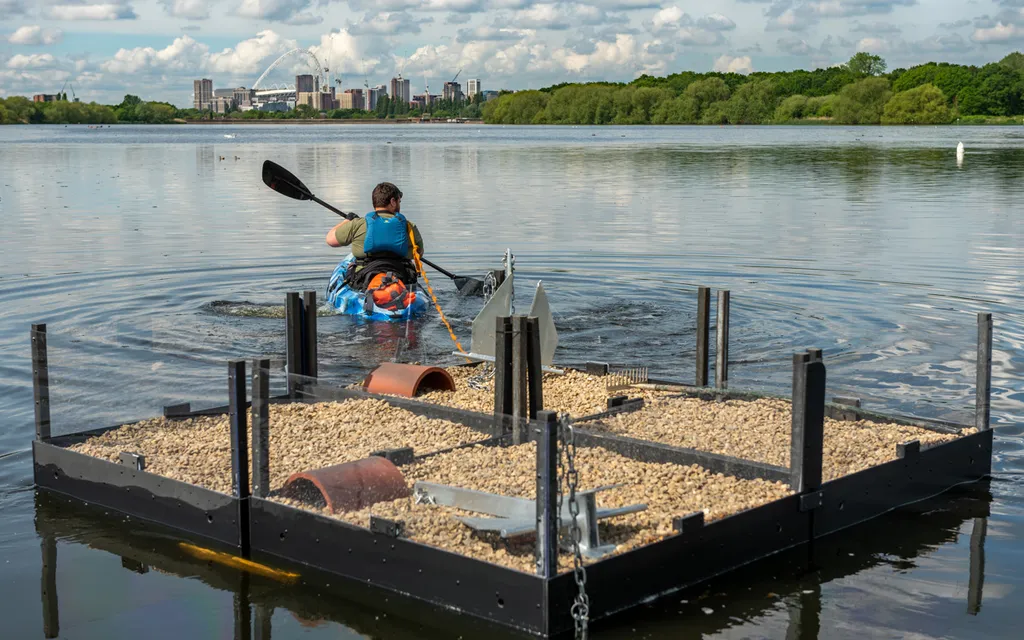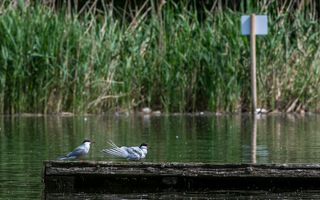New island habitats to support threatened water birds at the Welsh Harp Brent Reservoir


With the support of the Welsh Harp Conservation Group, we’ve started to install 14 new tern rafts, providing island habitats to support the common tern water birds at the Welsh Harp Brent Reservoir.
The Welsh Harp Brent Reservoir was built in 1835 to supply water to the Grand Union Canal. As well as being a place for sailing, watersports and walking, the reservoir is protected as a Site of Special Scientific Interest (SSSI) for the rich diversity of wildlife found on site, including water birds and 16 protected plant species.
Following statutory winter repairs and maintenance work, supported with funding raised by players of People’s Postcode Lottery, the reservoir has now almost re-filled to its normal level.
Urban wild spaces
Ben McMillan, one of our ecologists for London & South East, explains: “The Welsh Harp Brent Reservoir is one of London’s most significant urban wild spaces and provides a much valued area of green open space for people and wildlife.
“As part of a series of environmental improvements at the reservoir, and with the support of the Welsh Harp Conservation Group, we’re installing 14 new island habitats for common terns, one of the species of water bird that lives there and cited within the reservoir’s SSSI designation.
“Sadly, numbers of these silvery grey and white birds nick-named the ‘sea-swallow’, have been significantly declining in recent years. In the past, over 40 breeding pairs have been present, but in 2023 only two birds successfully reared chicks. The island habitats we’re installing will provide a safe space from flooding and predators for the birds, hopefully improving their breeding success. The islands are made of durable recycled plastic with a layer of shingle to imitate the tern’s natural beach nesting habitat.”

Installing a safe nesting space
Steve Leeke of the Welsh Harp Conservation Group, says: “Common terns arrive in the UK in April and then return to Western and Southern Africa in September. The Welsh Harp tern rafts have been vital in enabling these elegant birds to find a rare safe nesting place in the London area.
“We first installed wooden tern rafts here in the 1980s and at their peak at the turn of the century, they provided island habitats for an amazing 44 nesting pairs. Sadly the rafts have deteriorated over time and are no longer a viable nesting site. As a result, the number of visiting terns has declined, with last year only four pairs attempting to nest and producing just two chicks.
“These new breeding rafts provided by the Canal & River Trust will support this threatened species and are a welcome step in enhancing the biodiversity of the Welsh Harp.”
Other environmental improvements recently carried out by us at the Welsh Harp Brent Reservoir whilst it was drained include removing over 1,000 bags that volunteers helped fill with rubbish collected from the reservoir bed; creating new nesting areas in the reed beds for wetland birds; willow coppicing; and removing silt from one of the ponds.
